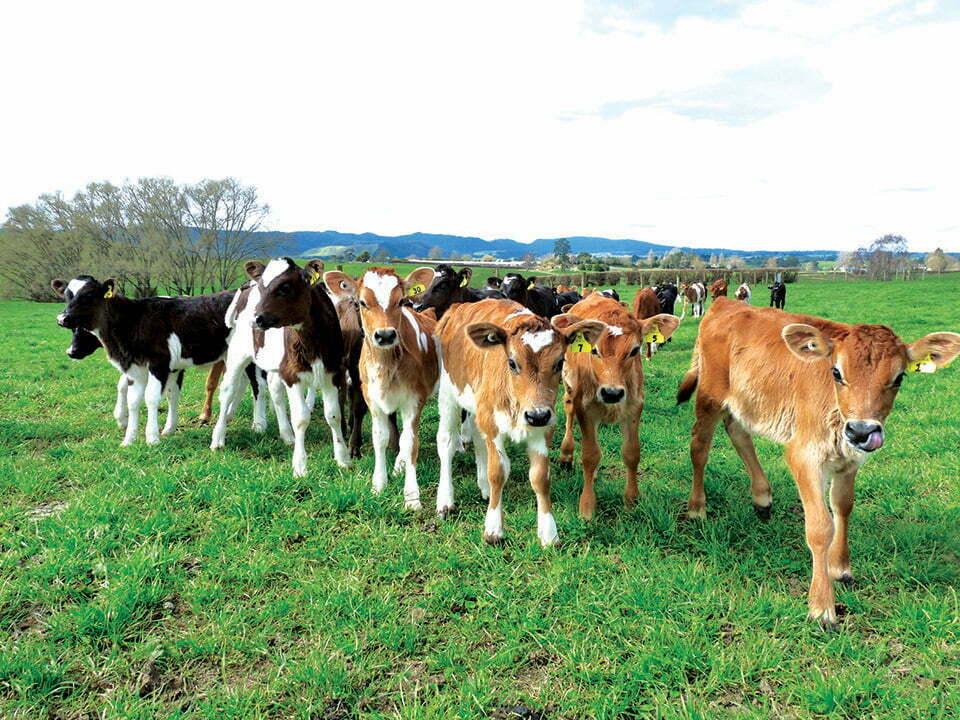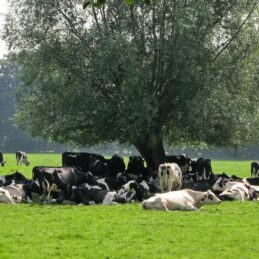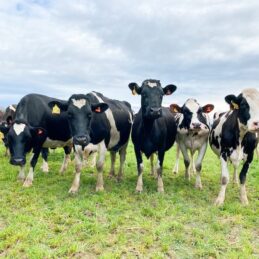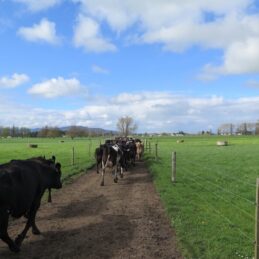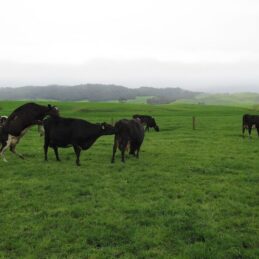Heifers are the future of the herd and whilst they are often referred to as the most important animals on the farm, it can sometimes be a case of “out of sight, out of mind”. However, it is important to keep them top of mind, even if they are not seen every day.
Our calves are reared with great attention to detail, weaned when they are looking good and performing well – meeting rumen fill expectations, body condition, height and weight (not just age) targets. Once they have got off to this great start, we need to build on those gains whether they remain on farm or go off to a grazier. Growing good heifers so that they perform to their potential as soon as they join the milking herd means that they provide a return on your investment as soon as possible. By the second lactation a heifer will break even and start to become profitable.
Having a plan for rearing heifers helps support the aim of having well grown animals who meet mating and calving targets, cycle and conceive well and reach good milk production levels. With the whole farm team on board, everyone is monitoring the animals and able to highlight any issues. Many dairy farmers have a good long-term relationship with their grazier. This is essential to ensure plans are put in place if targets slip so animals come back to farm grown as expected.
Picture 5 – Heifer growth rate and reproductive performance
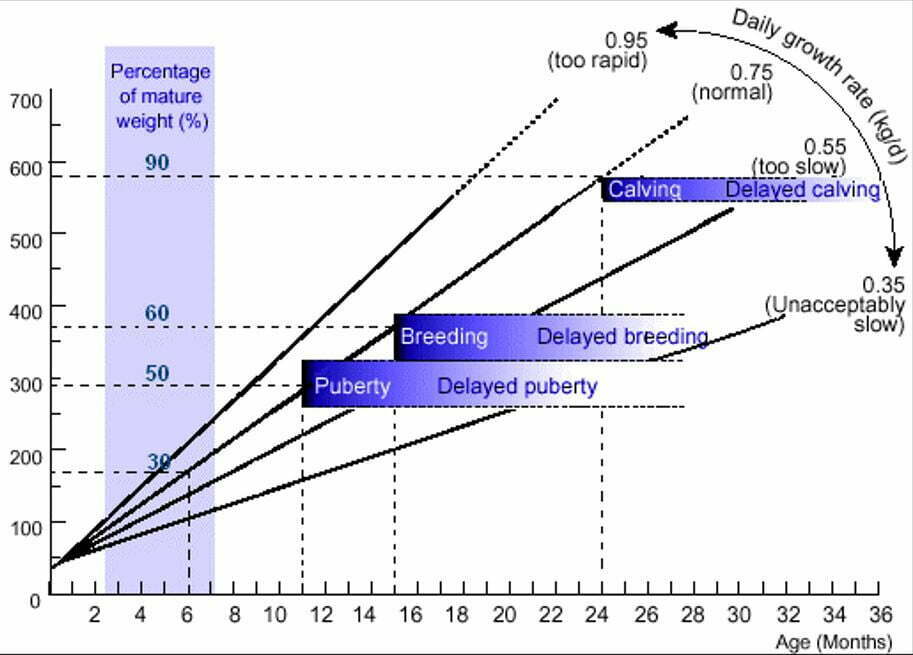
A graph (Picture 5) can be used to review expected growth rates (as a percentage of mature weight) and heifers can be tracked against this. Actual kilogram weights can be noted against these percentages to reflect your individual herd situation.
In a New Zealand grazing system, due to forage variability and availability, growth is not linear. We do see a growth rate reduction in wet winters and dry summers followed by compensatory gains when pasture growth picks up. Younger heifers in their first year can also have more selective intakesand sensitivity to digestibility of feed than older animals1. The weight and height of animals should be monitored at least every three months. It is important to consider muscle and skeletal growth (frame). Puberty is reached when animals hit certain weights, not when they are of a specific age, so this is important to ensure a successful first mating.
A weigh scale is a great investment but not always available. If using a weigh band, try to hire a scale at least once and calibrate the weigh band against it. To make height monitoring easier, paint coloured lines (wither height) on a post where the animals walk past. This makes it easier to see where some heifers may be falling behind. If there are a number of smaller and lighter heifers in the mob, consider putting them together so they can be preferentially fed and reduce the pressure on them from the more dominant animals. It is important to note that heifers are still growing while in their first lactation and sufficient feed needs to be offered so that growth targets can be achieved.
Grazed pasture is our cheapest feed and so will make up the majority of the diet. Consider including home grown forages in the diet, and supplements only when quantity or quality of forage is in short supply. A good way to monitor a drop in feed quality is when the herd milk solids start to drop off; the cows can be used as an indicator for the heifer diet as they are a marker for energy decreasing or neutral detergent fibre (NDF) increasing.
A growing heifer’s total nutrient requirements are lower than that of a milking cow but trace elements that can help with bone, muscle and soft tissue development are advisable to be included in the diet. A PhD thesis recently published looks at bone development in heifers and considers copper as an important mineral for bone integrity2. Copper can be deficient in the diet, either when there are insufficient levels supplemented or when other mineral interactions cause issues with availability to the animal. Zinc, selenium and iodine are also important at this stage.
Nutritech have a number of solutions to help with achieving your goals, such as DanMix® Youngstock Grower. This specifically designed free access mineral product can be offered in troughs or cut off drums in situations where supplementary feed is not generally offered. Please get in touch with your local Nutritech Area Manager to discuss your needs.
- Guidelines for optimal dairy heifer rearing and herd performance. J Margerison & N Downey. Calf and heifer rearing; Principles of rearing the modern dairy heifer from calf to calving, 2007
- Broken shoulders in dairy heifers in New Zealand: Investigating the relationship between live weight and bone morphology in the bovine forelimb. M J Gibson, 2021
- Heifer raising – Weaning to calving, 34) Growth rate. Michel A. Wattiaux. Babcock Institute

